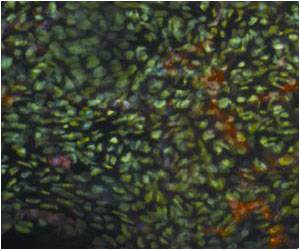New device termed ‘Therepi’ can be attached directly to the damaged heart, allowing delivery of multiple treatment doses of stem cells to prevent heart failure following a heart attack.
Highlights:
- New device that is implanted on the heart in a single surgical procedure delivers multiple doses of localized therapy to heart following a heart attack
- The device termed ‘Therepi’ could prevent progression from heart attack to heart failure by promoting healing and improving heart function
- One of the most common complications following a heart attack is heart failure as the heart tries to compensates for the non-functioning and damaged heart tissue.
Details of How The ‘Therepi’ Device Works
- The device consists of a reservoir that attaches directly to the damaged heart tissue by a one-time surgical procedure. A refill line connects the reservoir to a port either on or below the patient’s skin through which treatment can be administered either by the patient or a healthcare professional.
- The reservoir is fashioned out of a gelatin-based polymer, and has a hemispherical shape with a flat bottom that is attached to the damaged heart tissue. "The material we used to construct the reservoir was crucial. We needed it to act like a sponge so it could retain the therapy exactly where you need it and that is difficult to accomplish since the heart is constantly moving and squeezing,” added Whyte.
- The reservoir holds tremendous potential for drug delivery. The flat bottom consists of a semipermeable membrane that can be modified to permit more drug or larger molecules to pass into the heart tissue.
- The reservoir presents a wonderful opportunity in administering stem cell therapies. It behaves like a cell factory. The cells do not enter the heart but stay within the reservoir where they secrete paracrine factors that then promote healing and repair of the damaged heart tissue.
- The results showed that the device was effective in improving cardiac function after a heart attack in a rat model. In one group, multiple doses of cells were administered over a four week period to the damaged heart and single dose or no treatment in another set of rats by the team members.
- The team assessed the hemodynamic changes in the heart tissue using a pressure-volume catheter and also echocardiography was used to compare the change in cardiac function.
- The rats that received multiple dosages of cells via therapy were found to have a better cardiac function when compared to those who received only a single stem cell injection or no treatment at all.
Limitations of Current Treatments in Preventing Heart Failure
Two of the available standard systems for delivering therapies to prevent heart failure are inefficient and invasive.- In the first method, drugs are delivered systemically rather than locally to the site of the damage. The amount of drugs used therefore has to be limited to avoid severe side effects and often only a small fraction actually reaches the damaged heart tissue.
- In the other method, an invasive procedure is employed to directly inject therapies into the heart muscle. Should multiple doses be needed, this would mean multiple invasive procedures.
Determining Optimal Dose of Drug– Another Potential Use of Therepi Device
Since it enables multiple, localized doses to be delivered, the Therepi device could be employed as a tool to identify the exact optimal dosage for various conditions.Roche said that they are hoping to use the device as a research tool to learn more about the optimal drug loading regime.
- For the first time, scientists could have an opportunity to closely monitor multiple refills of localized therapies over a given period of time to determine the best dosing intervals and dosage amount.
Other Uses of Therepi
The device can be similarly used on other parts of the body to deliver treatments. By optimizing the design and material used, the device can be modified for use in various parts of the body for wide-ranging conditions."The device is really a platform that can be tailored to different organ systems and different conditions. It's just a great example of how intersectional research looking at both devices and biological therapies can help us come up with new ways to treat disease," said Varela.
Reference:
- Sustained release of targeted cardiac therapy with a replenishable implanted epicardial reservoir(https://www.nature.com/articles/s41551-018-0247-5)
Source-Medindia
















